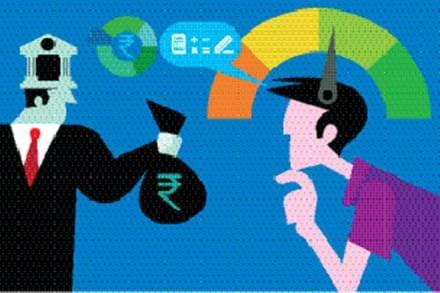As consumers, all of us require credit at some point. It offers us the necessary monetary leverage and helps manage our financial crisis. As with everything else, credit and its terms can be structured according to multiple terms, statements, and provisions. So, does it simply boil down to choosing the lender that offers the lowest interest rate? Generally, it doesn’t.
Before zeroing in on an offer, there are various considerations; one of the major ones being whether to get an instant loan from alternative lenders or a credit card. The credit provisions are almost the same where both agreements involve loan limits, late charges, underwriting requirements and more. But despite the apparent similarity, there are many differences when we individually analyze the attributes of instant loans and credit cards. So, how do they compare against each other? Let’s find out!
Ticket-Size
This is one of the biggest differences between instant loans and credit cards. Usually, the credit limit of a credit card is twice or thrice your monthly salary. So, if your salary is Rs 40,000 per month, your credit limit will either be Rs 80,000 or Rs 1,20,000.
Instant loans, however, have no similar rule. Unlike credit card loans, your salary isn’t the sole determinant of the instant loan amount. Here, your debt-to-income ratio, job stability, credit score, and a variety of other factors will be additionally considered. The ticket size of these loans, therefore, is much higher. Most alternative lenders offer instant loans ranging from Rs 1 lakh to Rs 15,00,000.
So, if you are looking to finance a major expense, it is best to settle with an instant loan over a credit card.
Expenses
When you’re planning to buy something with a credit card, you can only use it with lenders who accept the card. This limits your purchases to an extent as you still can’t access hard cash.
Since instant loans do not have any such option, you can use your funds everywhere. So, whether you’re looking to repair your house, pay your rental deposit, buy a used car, or consolidate your existing debts; you can do it all with an instant loan. Since the loan amount is available in your bank account, there is no limitation on how you use it.
Installment Debt and Revolving Debt
While both instant loans and credit cards deal with debts, the nature of these debts is entirely different. Credit cards are associated with revolving debt while instant loans are associated with installment debt.
Unlike installment debt that involves paying a fixed monthly installment, revolving debts are open-ended where the interest rate changes according to your monthly dues. So, if you have a credit card with a limit of Rs 1,00,000 and your outstanding dues are 90,000, your card is almost on the verge of being maxed out. The result: your monthly interest rate will be higher, and it’ll fluctuate till you pay your debts down. Since installment debt involves fixed installments, the interest rate will be unaffected even if you have Rs 90,000 dues on your Rs 1,00,000 worth loan.
Tenures
Another major difference between credit cards and instant loans lie in their tenure. Since credit cards are primarily tailored for smaller purchases, their tenures range from 30 days to 45 days. If you cannot pay off your dues within this tenure, a high interest rate will be levied on the outstanding amount.
Instant loans, however, have relatively relaxed tenures. Since the ticket-size of these loans is higher, the repayment window ranges from 1 year to 6 years. This way, you have enough time to pay off your dues without making a dent in your savings.
Final Thoughts
Both instant loans and credit cards are vital financial products. However, if you are looking for more funds against a longer time-frame, it is best to choose the former.
(By Aditya Kumar, Co-Founder & CEO, Qbera)
(Disclaimer: These are the author’s personal views)
